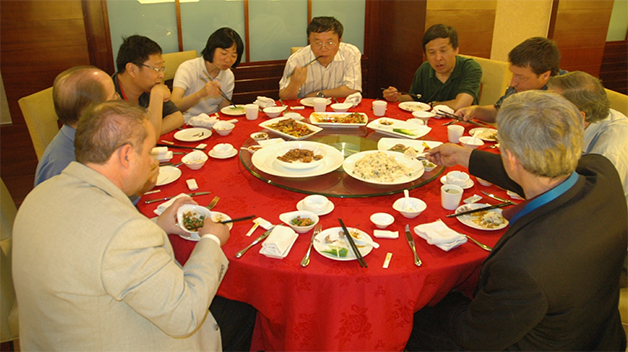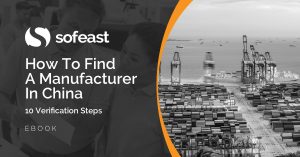If you have followed the advice about identifying potential suppliers in part 2, you may have found a few interesting suppliers. The next step is to confirm that they told you the truth and that they are reliable.
Even if you place one-shot orders, you should spend a little time to check if a potential supplier is legitimate. You don’t want to fall victim to a scam, do you?
Screening these suppliers and verifying the last candidate(s)
How to verify a manufacturer? There are three main ways:
-
Background checks
You want to avoid scammers who will run away with your deposit, but also manufacturers who told you lies about their size, trading companies that pretend to own a factory, and so on.
You can gather some information for free on search engines and on B2B directories, as I detailed in these 2 articles:
If possible, ask potential suppliers for customer references. Ideally, you could talk to one or two such customers on the phone. Ask them how long they have been working with that manufacturer, and ask them to identify the supplier’s strengths and weaknesses.
This is a particularly subtle part of the verification process, for two reasons:
- Many of these references will be fake. Or maybe they did produce for Disney, but 3 years ago and through another factory that subcontracted the job out to them.
- Many legitimate manufacturers will refuse to communicate the contact information of any customer, for fear that you work for one of their competitors.
Another approach that works well is to call… the supplier salespeople themselves! We have found that they lie much less on the phone than in emails. And they tend to simply hang up the phone — or become aggressive — when they are asked questions they are not comfortable answering.
-
Factory visits
At the entrance of every trade show in China and Hong Kong, the organizer should have a notice warning visitors of the following:
- Do NOT believe the facts and photos shown on brochures.
- Do NOT give importance to ISO 9001 certifications.
- Do NOT trust what salespeople tell you without checking it.
For an order of 2,000 USD, I can understand why you wouldn’t spend time visiting the factory. But, for large orders, failing to verify the manufacturer’s claims is asking for trouble.
If you visit the factory by yourself, your hosts will try to impress you. Instead, use your eyes and try to grasp the situation and understand the overall environment. An example of what to look out for during a factory visit can be found in this article.
If you can’t visit the factory by yourself, a solution is to pay a quality assurance agency for a quality audit. Companies like ours have auditors in the main manufacturing areas and do this type of mission routinely for importers.
Also, if a QA agency is focused on serving SMEs, they will offer an entry-level audit service around 300 USD. (If you are looking for such services, we’ll be happy to serve your needs at Sofeast.)
Image source: https://www.youtube.com/AAA Factory Tour
-
Face-to-face meetings
Let’s say you took the time to visit the factory. Should you rush through the visit in 2 hours, and try to visit 2-3 factories in a day?
If you have found a factory that seems to be a good fit for you, you need to spend time there. You need to get to know them, and vice versa. Business is often done around a dinner table.
Image source: https://www.languagetrainers.co.uk/
Let’s say you have a problem down the road, and you only know the salesperson who handles your account. You will wish you had had dinner with a manager so that you would have a second person to call!
So, the first reason for socializing is the need to know a few more people from the factory and the second reason is to gather information.
In an informal setting such as a dinner, try to ask a few questions to gauge the owner’s long-term commitment to his company. If he mentions he is investing heavily in real estate, this is not a good sign.
You can see other examples of questions to ask in this article.
End of the verification phase
At the end of this process, if all runs smoothly, you will have one best candidate—to use for a trial order—and a few others to keep as backups.
In the next part, we’ll talk about the way to handle these second-choice suppliers.
>> Move on to the next post in this series. Read it here: Sourcing from China 101, Part 4: Second Choices vs. “Never Again” <<
Are you trying to find a manufacturer in China who is well-suited to your needs and can also deliver on their promises?
Sofeast has developed 10 verification steps to help importers find the right manufacturing partner in China. They’re shared in this FREE eBook: “How To Find A Manufacturer In China: 10 Verification Steps.”
It covers:
- Background checks
- Manufacturing capabilities
- Quality system auditing
- Engineering resources
- Pricing, negotiation, & contracts
- …and much, much more
Just hit the button below to get your copy and put yourself in a great position to get better results from Chinese manufacturers who supply your products:



